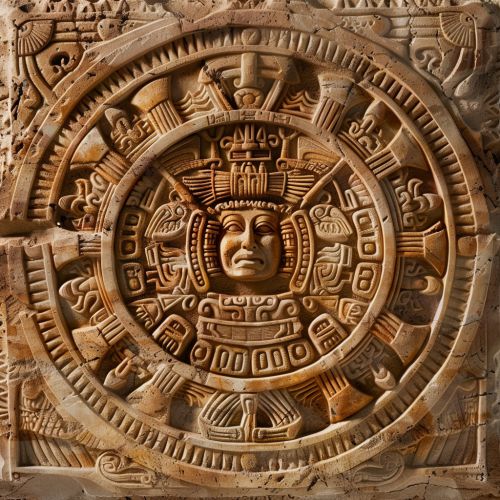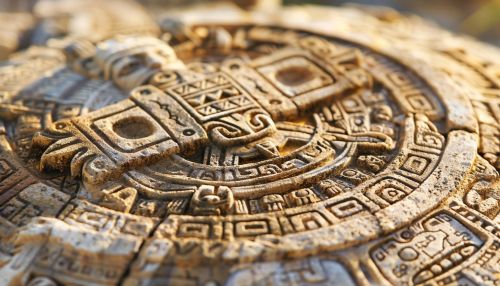Mesoamerican calendar systems
Origins and Development
The Mesoamerican calendar systems are a set of complex and interconnected systems developed by various cultures in the region, including the Olmecs, Maya, and Aztecs. These calendars were used to track time and predict celestial events, and were deeply intertwined with the religious and societal structures of these civilizations.


The origins of these calendar systems can be traced back to the Olmecs, often considered the mother culture of Mesoamerica. The Olmecs developed a long count calendar, which was later adopted and refined by the Maya. The Aztecs, influenced by earlier Mesoamerican cultures, also developed their own calendar system.
Structure and Function
The Mesoamerican calendar systems were based on two separate yet interconnected cycles: the 260-day sacred calendar, known as the Tzolk'in in the Mayan language, and the 365-day solar calendar, known as the Haab'. These two cycles would synchronize every 52 years, an event known as the Calendar Round.
The Tzolk'in combined 20 day names with 13 day numbers to produce 260 unique days. It was used for divination and to determine auspicious days for various activities. The Haab', on the other hand, was used to track the solar year and consisted of 18 months of 20 days each, with an additional 5 'unlucky' days at the end of the year.
The Calendar Round was of great significance in Mesoamerican cultures, with the end of each 52-year cycle often marked by rituals and ceremonies, including the New Fire ceremony in Aztec culture.
Astronomical and Mathematical Accuracy
The Mesoamerican calendar systems were remarkably accurate in their tracking of celestial events. The Maya, in particular, were skilled astronomers, and their calendar system reflects a sophisticated understanding of the movements of the sun, moon, and planets.
The Maya Long Count calendar, for example, was used to track longer periods of time and is notable for its accuracy. It was based on a vigesimal (base-20) number system, and each unit of time in the Long Count calendar corresponded to a specific number of days. The b'ak'tun, for instance, was equivalent to 144,000 days, or roughly 394 solar years.
Cultural Significance
The Mesoamerican calendar systems were not merely tools for tracking time; they were deeply embedded in the religious and societal structures of these cultures. The calendars were used to determine auspicious days for ceremonies, wars, and other significant events. They also played a key role in the mythology and cosmology of these cultures.
In Aztec culture, for example, the 52-year Calendar Round was associated with the regeneration of the world, and the New Fire ceremony was performed at the end of each cycle to ensure the continued existence of the world.
Legacy and Influence
The Mesoamerican calendar systems have left a lasting legacy, influencing subsequent cultures and sparking interest and study among modern scholars. The Maya Long Count calendar, in particular, has been the subject of much attention due to its supposed prediction of the 'end of the world' in 2012.
While this interpretation is widely regarded as a misunderstanding of Maya cosmology, it underscores the enduring fascination with these sophisticated and complex calendar systems.
